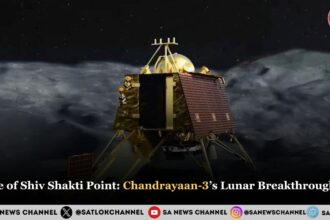Space technology has evolved significantly since the launch of Sputnik 1, the first artificial satellite, in 1957. Over the decades, nations and private organizations have invested heavily in pushing the boundaries of space exploration, enabling humanity to study celestial bodies, monitor Earth’s climate, and establish global communication networks. This article explores major advancements in space technology, their impact on society, and the future of this fascinating field.
Early Milestones: Laying the Foundation
Space exploration began during the Cold War, with the United States and the Soviet Union competing to demonstrate technological supremacy. Key milestones from this period include:
- Sputnik 1 (1957): The first artificial satellite, launched by the Soviet Union, marked humanity’s entry into space.
- Yuri Gagarin (1961): The Soviet cosmonaut became the first human to orbit Earth aboard Vostok 1.
- Apollo 11 (1969): NASA’s mission achieved the first crewed Moon landing, with Neil Armstrong and Buzz Aldrin becoming the first humans to walk on the lunar surface.
Advancements in Satellite Technology
Satellites play a crucial role in modern life, supporting communication, navigation, weather forecasting, and Earth observation. Key advancements include:
- Miniaturization: Advances in electronics have led to the development of small satellites, including CubeSats and nanosatellites, reducing launch costs and increasing accessibility for universities and startups. Unlike traditional large satellites, these smaller counterparts are affordable, faster to deploy, and more versatile. Networks of CubeSats can operate as constellations, working collectively to provide global coverage for applications such as Earth observation, disaster monitoring, and communication.
Examples of Success:
- Starlink by SpaceX: Utilizing small satellites to provide global internet coverage.
- Planet Labs: Operating a fleet of CubeSats for high-resolution Earth imaging, aiding environmental monitoring and urban planning.
- High-Resolution Imaging: Modern Earth observation satellites, such as those in the Sentinel and Landsat programs, provide high-resolution data for agriculture, urban planning, and disaster management.
- Geostationary Satellites: Satellites like SES-17 remain fixed relative to a point on Earth, enabling uninterrupted communication and broadcasting services.
The proliferation of satellites has also raised concerns about orbital debris, prompting initiatives like active debris removal and satellite design for deorbiting.
Space Stations: Platforms for Research
Space stations serve as laboratories for scientific experiments and testing new technologies in microgravity:
- International Space Station (ISS): A collaboration between NASA, ESA, Roscosmos, JAXA, and others, the ISS has hosted thousands of experiments in fields like biology, physics, and materials science.
- Chinese Tiangong Station: China’s rapidly developing space station is becoming a hub for international research.
- Commercial Space Stations: Private companies like Axiom Space are planning to launch commercial space stations, providing platforms for tourism and research.
Revolutionary Space Propulsion Systems
Traditional rocket propulsion relies heavily on chemical fuels, limiting efficiency and range. Recent developments in propulsion systems are paving the way for more sustainable, long-range, and cost-effective missions.
a. Electric Propulsion:
Uses electric fields to accelerate ions, achieving high efficiency with minimal fuel consumption.
Example: NASA’s Dawn spacecraft utilized ion propulsion to explore the asteroid belt.
b. Nuclear Thermal Propulsion:
Converts nuclear energy into heat to expel propellant at high velocities, offering faster interplanetary travel.
Example: NASA and DARPA are collaborating on the Demonstration Rocket for Agile Cislunar Operations (DRACO) program to develop nuclear-powered spacecraft.
c. Solar Sails:
Harness solar radiation for propulsion, requiring no fuel and offering infinite endurance in theory.
Example: The LightSail 2, funded by The Planetary Society, successfully demonstrated controlled solar sailing in 2019.
The Era of Space-Based Observatories
Space-based observatories have transformed our understanding of the universe. Unlike ground-based telescopes, these observatories are free from atmospheric distortion, offering unparalleled clarity and range.
Notable Observatories:
1. James Webb Space Telescope (JWST):
Launched in December 2021, JWST provides unprecedented infrared imaging, revealing distant galaxies, exoplanets, and the earliest stars.
2. Hubble Space Telescope:
Operational since 1990, Hubble has been instrumental in discoveries ranging from dark energy to the age of the universe.
3. Euclid Space Telescope:
Recently launched by the European Space Agency (ESA), Euclid focuses on mapping dark matter and understanding cosmic acceleration.
4. Deep Space Probes:
Voyager 1 and 2, launched in the 1970s, continue to transmit data from interstellar space. Newer missions, like the James Webb Space Telescope (JWST), provide unprecedented insights into the early universe.
Scientific Milestones:
- Observing exoplanet atmospheres for biosignatures.
- Studying black hole phenomena in unprecedented detail.
- Expanding our understanding of the Big Bang and cosmic evolution.
Artificial Intelligence in Space Exploration
Artificial Intelligence (AI) is revolutionizing space exploration by enhancing decision-making, automating spacecraft operations, and interpreting large datasets.
Applications of AI:
- Autonomous Navigation:
NASA’s Perseverance rover uses AI to navigate the Martian terrain, avoiding obstacles and optimizing its path without human intervention.
- Data Analysis:
AI algorithms analyze vast amounts of data from observatories like JWST, accelerating the identification of patterns, objects, and anomalies.
- Satellite Health Monitoring:
AI monitors spacecraft systems, predicting failures and suggesting corrective actions in real-time.
- Mission Planning: AI tools optimize mission schedules and spacecraft trajectories, reducing operational costs.
The integration of AI into space systems reduces operational costs and enhances mission success rates, making space exploration more efficient and reliable.
Space Tourism: The New Frontier
Space tourism, once a distant dream, is becoming a reality thanks to advancements in reusable rocket technology and private sector involvement.
Key Players:
1. Blue Origin:
Conducted suborbital flights with its New Shepard spacecraft, offering civilians a few minutes of weightlessness.
2. Orbital Tourism:
SpaceX’s Crew Dragon missions have carried private individuals to the ISS.
3. Lunar Tourism:
Plans for commercial lunar missions, such as SpaceX’s Starship flights, aim to make space tourism more accessible.
4. Suborbital Flights:
Virgin Galactic’s SpaceShipTwo offers passengers brief experiences of weightlessness and stunning views of Earth
Challenges:
- Cost: Tickets range from $250,000 to $450,000, limiting accessibility.
- Safety: Ensuring reliable and safe experiences for civilians remains a top priority.
Despite these challenges, space tourism is fostering innovation and generating public excitement about space exploration.
Lunar and Martian Exploration
Human exploration of the Moon and Mars has gained momentum with ambitious programs and robotic missions.
Lunar Exploration
Missions like India’s Chandrayaan-3 and China’s Chang’e program have advanced our understanding of the Moon’s composition and resources.
Artemis Program:
NASA’s Artemis program aims to return humans to the Moon by 2025, including the first woman and person of color. It also plans to establish a sustainable lunar base for scientific research.
Commercial Lunar Payload Services (CLPS):
Private companies are delivering instruments and experiments to the lunar surface, supporting Artemis objectives.
Martian Exploration
Mars Rovers:
NASA’s Perseverance rover, equipped with advanced instruments, is searching for signs of past life on Mars. Similarly, the UAE’s Hope probe studies the Martian atmosphere, while China’s Tianwen-1 mission combines an orbiter, lander, and rover.
Mars Sample Return Mission:
NASA and ESA are collaborating to retrieve samples collected by Perseverance for detailed analysis on Earth.
■ Also Read: Exploring the Depths of Space: A Journey through Space Science Missions
Lunar and Martian exploration is not only about discovery but also about preparing humanity for life beyond Earth.
Advancements in Space-Based Manufacturing
Microgravity offers unique opportunities for manufacturing processes that are impossible or inefficient on Earth.
Innovations in Space Manufacturing
3D Printing in Orbit:
NASA and private companies like Made In Space are using 3D printing aboard the International Space Station (ISS) to produce tools and parts on-demand, reducing the need for resupply missions.
Fiber Optics:
ZBLAN, a high-quality optical fiber, can be manufactured more efficiently in microgravity, with potential applications in telecommunications and medical imaging.
Space-based manufacturing has the potential to revolutionize industries, enabling more efficient production and reducing environmental impact on Earth.
Propulsion Systems: Enhancing Space Travel
Efficient propulsion systems are essential for long-duration missions. Recent innovations include:
- Ion Propulsion: This technology uses electric fields to accelerate ions, providing a more efficient alternative to chemical rockets. NASA’s Dawn spacecraft successfully utilized ion propulsion to explore the asteroid belt.
- Reusable Rockets: Companies like SpaceX have revolutionized space travel by developing reusable rocket systems like the Falcon 9, drastically reducing launch costs.
- Nuclear Propulsion: Experiments with nuclear thermal and nuclear electric propulsion systems aim to enable faster travel to distant planets.
Sustainability in Space
With the increasing number of satellites and missions, sustainability in space is becoming a critical issue.
Challenges
Space Debris:
Over 27,000 pieces of debris are currently tracked in Earth’s orbit, posing collision risks to operational spacecraft.
Environmental Impact:
Rocket launches produce carbon emissions and other pollutants, raising concerns about their environmental footprint.
Solutions
Active Debris Removal:
Programs like ESA’s ClearSpace-1 aim to capture and remove defunct satellites.
Reusable Rockets:
SpaceX’s Falcon 9 and Starship systems significantly reduce waste by reusing rocket components.
Ensuring sustainable practices in space is essential for preserving its utility for future generations.
International Collaboration in Space Exploration
Space exploration is increasingly becoming a collaborative effort among nations and private entities.
Examples of Collaboration
International Space Station (ISS):
A joint project involving NASA, Roscosmos, ESA, JAXA, and CSA, serving as a hub for scientific research and international cooperation.
Mars Sample Return:
A partnership between NASA and ESA to bring Martian samples to Earth.
Benefits:
- Reduces costs by sharing resources and expertise.
- Fosters peaceful relations and mutual understanding.
Collaboration ensures that the benefits of space exploration are shared globally, advancing humanity as a whole.
The Role of Private Industry
Private companies are driving much of the innovation in space technology, competing with traditional government agencies. Examples of Private Sector Contributions:
SpaceX:
Pioneered reusable rockets, drastically lowering launch costs.
Blue Origin:
Focuses on suborbital tourism and developing sustainable lunar habitats.
Rocket Lab:
Specializes in small satellite launches, expanding access to space for smaller organizations.
The privatization of space activities is accelerating technological progress and creating new economic opportunities.
Challenges and Ethical Considerations
Despite remarkable progress, space technology faces several challenges:
- Space Debris: With thousands of satellites in orbit, debris poses risks to operational spacecraft and future missions.
- Environmental Impact: Rocket launches produce emissions and debris, raising concerns about their impact on the environment.
- Equitable Access: Ensuring that developing nations can benefit from space technology remains a priority.
Ethical discussions also address issues like planetary protection and the commercialization of celestial resources.
Future Prospects: The Path Ahead
The future of space technology holds exciting possibilities:
- Interplanetary Colonization: Efforts to establish permanent habitats on the Moon and Mars, such as SpaceX’s Mars City plans, aim to make humanity a multiplanetary species.
- Space-Based Solar Power: Satellites that collect solar energy and transmit it to Earth could provide a sustainable energy source.
- Asteroid Mining: Extracting resources from asteroids has the potential to revolutionize industries on Earth.
- Quantum Communication: Quantum satellites like China’s Micius are pioneering secure, ultra-fast communication technologies
Conclusion: A Cosmic Perspective
Advancements in space technology are not just about exploring the cosmos; they address pressing challenges on Earth, from climate change monitoring to disaster management and global connectivity. As humanity continues to push the boundaries of what is possible, the future of space exploration holds promises of discovery, innovation, and inspiration.
By embracing collaboration, sustainability, and innovation, we stand on the cusp of a new era in space exploration—one that will define our place in the universe for generations to come.
From Exploring Space to Discovering the Divine
Space technology has unlocked incredible opportunities, expanding our understanding of the cosmos and the wonders of creation. Yet, as humanity reaches for the stars, it becomes evident that the universe operates under intricate laws beyond human comprehension. This realization prompts us to ponder the ultimate questions: Who created this vast cosmos? What is the purpose of our existence?
The answers to these profound mysteries lie in spiritual wisdom and devotion to the True God. Books like “Gyan Ganga” and “Way of Living” by Saint Rampal Ji Maharaj provide enlightening insights into the origins of the universe and the path to a meaningful life. These works blend science and spirituality, helping seekers understand the Creator’s role in shaping existence. By exploring these teachings, one can find true purpose, peace, and connection to the divine.









